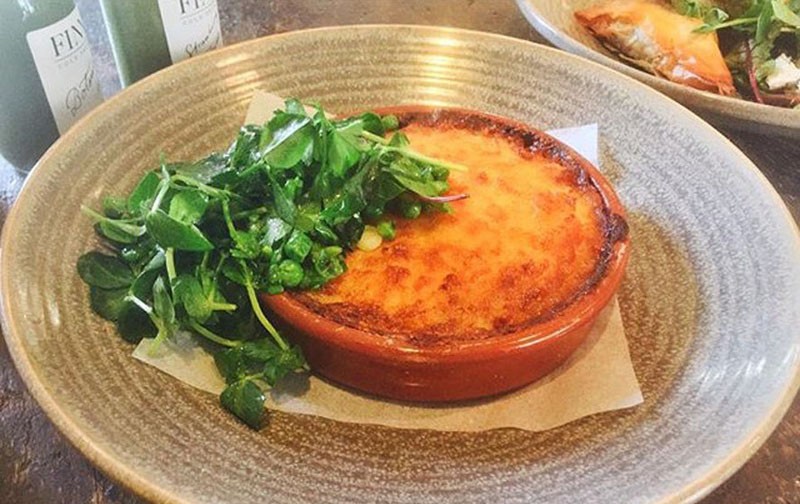
Tikka masala, jalfrezi and vindaloo are creeping up the list of favourite foods for the British but that’s where the buck of integration stops

It is not easy to find Shepherd’s Pie, or for that matter its close relative Cottage Pie, in the country that invented it. A part of Britain’s national cuisine, the concoction of mince and vegetables baked under a thick layer of mashed potatoes, it has vanished from many menus and is far harder to find than the chicken tikka masala available everywhere.
Tikka masala is, in fact, ranked as Britain’s most popular dish for over a decade, and has recently been replaced by the Chinese stir fry, while other Asian dishes hotter than tikka masala such as jalfrezi and vindaloo are also creeping up higher and higher on the list of favourite foods for Britain.
According to a recent survey, 50 per cent of British people, most of them of strictly British origin, voted typical British food such as pies, fish and chips and bread and butter pudding as ‘boring’. The result is samosas are now far easier to buy as a teatime snack than a crumbly scone, leave alone a crumpet with its holes and fine texture.
Of course, this is a natural result of the fact that since the 1950s, Britain has ushered in wave after wave of immigrants -- from the Indian subcontinent, from Africa, from the West Indies and most recently from Eastern Europe.
A mixing of cultures is also often a positive trend; but in today’s Britain it has led also to a huge body of problems.
A Pakistani student enrolled at a London university describes how she was for over a year pressurised and harassed by a radical Islamic group operating on campus to attend their rallies and join in their activities. Many parents report that children who attend educational institutions in the UK now come back more radicalised than they had ever been before they went out. Extremist groups know how to prey on homesickness and turn this into a ploy to recruit bright young people to their cause.
The problem is aggravated by Britain’s failure to absorb its inter-racial population with Asians, notably Muslims, still seeing themselves as a distinct, differentiated group which has failed to fall into any kind of melting pot. The fact that in London only 45 per cent of the population is white is visible. This is not a problem. It should not be considered one. The problem lies in the fact that non white persons have somehow fallen outside the system and been isolated from the mainstream. They do not form a whole in themselves either, with black persons following a cultural tradition quite different to that of Asians, the Chinese rarely mingling with persons from the subcontinent and even people of Indian, Bangladeshi and Pakistani origins keeping themselves apart.
The issues that arise came up dramatically this Ramzan when some primary schools in London banned children from keeping the 19 hour fast this Ramzan, on the basis that not permitting them to eat for this length of time amounted to child abuse. Families whose members awoke before 2am for a fast that began around 2:30am and ending after 9:20pm at night were not amused, with mosque prayer leaders suggesting this was a deliberate curb on religious freedom.
The question raises the delicate issue of protecting cultural and religious values but also the rights of children and the values of the society into which they have shifted. Britain has struggled with this generation after generation.
This struggle and its numerous complexities are in so many ways highlighted by the search for that elusive pie. British people have turned into their own much that belonged to other cultures, while rejecting what was really a part of their own past. The Shepherd’s Pie, in its classical form, can now often be found only at a handful of pubs scattered across London. The Ivy at Leicester Square possibly does the best version of the dish, serving it up in quintessential British environment. Smaller pubs such as those near the Kennington Oval serve up a slightly inferior version of the same dish.
The more posh restaurants, including those specialising in British foods, have in many cases dolled up the Shepherd’s Pie by adding a curious Indian flavour to it and serving it with jalfrezi flavoured beef or added in exotic ingredients such as duck or pickles.
Truly, the confusion of Britain’s culture is reflected in these curious variations on a classical dish.
Yes, pies are available at supermarkets and on British Rail. But this plasticised version of food hardly counts as something that can be eaten. So, on the surface, the city of London seems to cope well with its multiracialism. People of every race can be spotted at the parks, cafes, museums and other places. But behind this lurks a sinister sense of divide. As in other European countries, there is also some sense of threat.
Racism is something fewer and fewer people admit to. But scratch this surface, and it emerges somewhere, in some form. The old lady serving customers tea at a typical café admits that the changes in the only country she has ever known have brought much concern. She wonders how long her tea-house with its scones, clotted cream and Earl’s Gray tea can withstand the pressure from Indian eateries where young Britons say the food is tastier, the service more charming.
The difficulties are many and Britain struggles to circumvent them. In the process, it is in danger of losing parts of its own heritage, but perhaps being enriched by influences that come in from the outside and add to its diversity as a nation which now comprises people speaking dozens of different languages and following nearly a score of different beliefs.